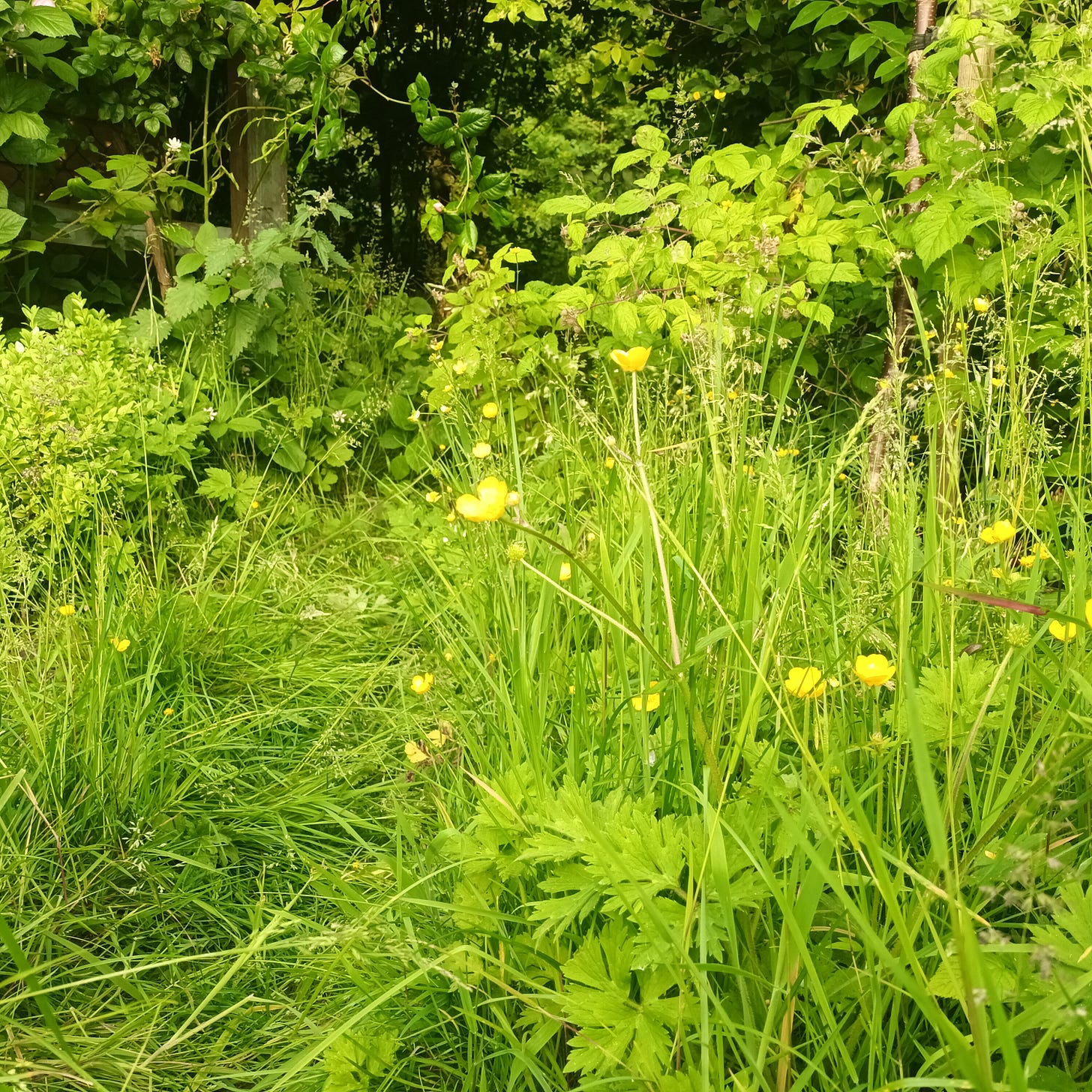There’s history, and there’s the kind of gentle, small-scale thought about history that drops quietly into your brain - the opposite of a revelation. A little tiny shift in the borders of how you picture the past; a single raindrop in the thunderstorm.
I like these little raindrops, so I am going to share one. There’s been a viral post going around, with ‘before and after’ photos of a typical new build garden that the owner has transformed from stark bare lawn, to a plant-billowing ‘cottage garden’. This - and never-ending debate about who gets to decide what kind of garden is ‘appropriate’ - was in the back of my mind as I worked in my garden today.
Years ago, when I was a graduate student, I was doing some reading (as you do) on medieval people’s theories of optics. Via a lovely article by Carole Rawcliffe (which is mostly, in fact, about gardens!), I came across the fascinating theory of William of Auvergne. William is one of several medieval authorities Rawcliffe quotes, who believed that colour green to medically beneficial to the eyes. As Rawcliffe sums up his argument, ‘Whereas white dilated the eye and black caused it to contract, green represented the perfect mean, and was thus the most soothing and restful of all colours’. I love this logic, which is so clearly based on watching an eye respond to light and dark, and correctly intuits that the iris of the eye is a muscle, and might therefore need rest just as other muscles do. Following this argument, other authorities such as Hildegarde of Bingen and Bartholomaeus Anglicus recommended gazing on a green meadow or lawn, in order to rest tired eyes. Rawcliffe notes that, as a result ‘many men and women chose to study in gardens … In many English monasteries books were stored in carrels around the cloister, where the brothers would sit and read, gazing on the green turf’.
I loved this idea. I still do. I was charmed by the thought that, because Oxford has medieval colleges with medieval cloisters, as a student I could sit and read and gaze out onto flat clipped grass, as if seven centuries had collapsed into nothing. I can still picture those cloisters, and those lawns, flat as bowling greens, manicured to perfect smoothness. This is, I suspect, the image of an Oxbridge college lawn most of us could call to mind: always perfectly mown, and usually with a discreet sign informing the hoi polloi that actually walking on this pristine surface is the preserve of dons, or fellows, of the college in question.
Since I first read that article, things have changed for gardens. The fashion for wildflower meadows, and for eco-friendly gardening, has left its mark on public and private lawns. Near me, there are beautiful tangles of cornflowers and poppies sown into the verges of the roadside; a house with a grand garden has transformed the field and avenue through which you approach it into a wildflower meadow nodding with buttercups. And I am far, far, far too lazy to do more than cut back the long grass in my weedy lawn where it threatens to invade the box hedges.
As I was doing a bit of that cutting back today, it occurred to me for the first time that when Chaucer describes wandering through a meadow where the ‘small, sweet grass’ is ‘embroidered’ with flowers, he is probably not describing a hay meadow, but simply a lawn, left to do its own thing, in a medieval ‘no-mow May’. It got me thinking that, when medieval authors endorsed gazing on a green lawn, they may not have pictured the static, uniform surface I once thought was so timeless. With mowing a notoriously tedious chore in medieval accounts of work, it seems unlikely. So I’d like to think that the green lawns on which medieval monks and nuns gazed to rest their eyesight were swaying seas of stems in varying shades of greens, topped with plumes and fronds of seeding grass, and embroidered with the bright flashes of wild flowers. If that’s not a good enough precedent for the rest of us, what is?
***
The article from which I quote is Carole Rawcliffe, ‘Delectable Sightes and Fragrant Smelles: Gardens and Health in Late Medieval and Early Modern England,’ Garden History 36.1 (2008): 3-21.




